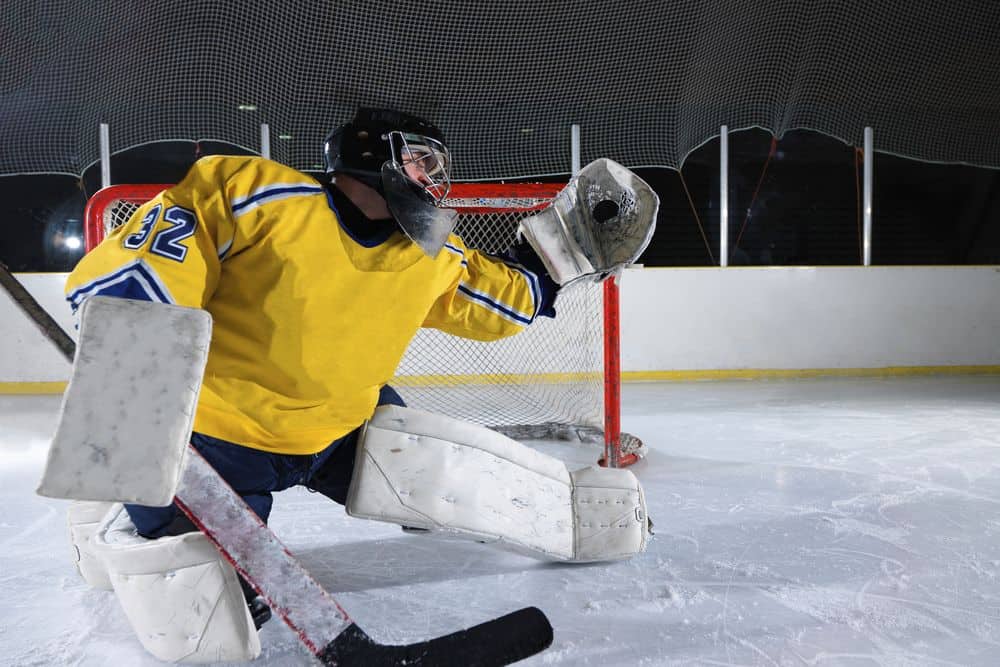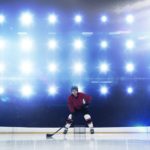In the fiercely competitive world of hockey, goaltenders assume the crucial role of defending their team’s net. One of their greatest challenges lies in thwarting the mighty slapshot, a shot that can reach astonishing speeds of up to 100 mph.
While goalie equipment is meticulously designed to prioritize safety, the impact of these thunderous shots can still leave a lasting impression. This article delves into the intricacies of goalie equipment and its role in ensuring player safety. Additionally, it explores the potential risks and injuries associated with stopping slapshots.
From the sturdy leg pads and chest protectors to the resilient goalie mask equipped with a steel cage, every piece of equipment is intended to mitigate the force of these shots. Nonetheless, even with these protective measures in place, injuries can occur, ranging from mere discomfort to more severe issues like concussions.
By comprehending the risks involved and upholding proper safety measures, goaltenders and their teams can prioritize the well-being of these crucial players on the ice.
Goalie Equipment and Safety
Goalie equipment, designed for optimal safety, provides sufficient padding and protection for goaltenders. Advancements in goalie equipment have significantly improved the safety of goaltenders on the ice. Each piece of equipment, from chest protectors to skates, is carefully designed to minimize the impact of shots and minimize the risk of injury.
The bulky leg pads, chest and arm protector, blocker, and catching glove offer ample padding to absorb the force of most shots. Proper fitting equipment is of utmost importance to ensure maximum safety and performance. Ill-fitting equipment can leave vulnerable areas exposed and increase the risk of injury.
Goaltenders now have access to a wide range of goalie equipment options, allowing them to find the perfect fit for their unique body shape and playing style. By investing in high-quality, properly fitting equipment, goaltenders can enhance their safety and performance on the ice.
Injuries and Slapshots
Slapshots from skilled players can deliver shots reaching speeds of 80-100 mph, posing a significant risk of injury to goaltenders. While goalie equipment is designed for optimal safety, shots from these skilled players can still sting and leave bruises.
The effectiveness of goalie padding, such as the bulky leg pads, chest and arm protector, blocker, and catching glove, helps minimize the impact of most shots. However, areas vulnerable to injury include the collarbone, stomach, groin, and backs of the legs.
To minimize injuries from slapshots, goalies can employ strategies such as proper positioning, quick reflexes, and anticipating the shooter’s movements. Additionally, ensuring that equipment is well-fitted and properly maintained is crucial.
While goalie injuries are more commonly caused by muscular issues and collisions with other players, the risk of injury from powerful slapshots remains a concern that goaltenders must be aware of and take precautions to mitigate.
The Goalie Mask
The use of a protective mask is an essential component of a goaltender’s equipment. Goaltenders now wear protective masks with a steel cage, providing a crucial barrier against high-speed shots.
The evolution of the goalie mask has come a long way since Jacques Plante debuted the NHL’s first goalie mask in 1959. These masks have greatly improved the safety of goaltenders by reducing the risk of serious facial and head injuries. However, shots to the mask can still cause concussions and other injuries, as seen in cases like Mackenzie Blackwood losing teeth.
While the goalie mask is highly effective in minimizing injuries, it is important to note that there is no exact science to prevent or predict concussions in hockey.
The ongoing evolution of goalie masks continues to prioritize the safety and well-being of goaltenders in the game of hockey.
Players Getting Hit by Slapshots
Players face a significant risk of injury when struck by a powerful slapshot. Slapshots can cause severe injuries to players, and the risk of injury increases if the shot is to the face. Facial injuries, including tooth loss and fractures, are particularly high risks, especially if players are not wearing a shield.
However, there are risk reduction techniques that can help minimize the chances of injury. Protective equipment, such as face shields, can help reduce the risk of facial injuries. Additionally, players can also focus on improving their agility and reaction time to better avoid getting hit by slapshots.
It is essential for players to prioritize their safety and take necessary precautions to prevent serious injuries while playing the game.
Goalie Injuries
Goalie injuries can occur from the impact of powerful shots and collisions, often resulting in muscular issues and accidental contact with other players. While goalie equipment provides sufficient padding and protection, injuries can still happen. Common goalie injuries include muscle strains, sprains, and tears, as well as concussions and facial injuries. To prevent goalie injuries, proper warm-up exercises and stretching routines are essential to maintain flexibility and prevent muscle strains. Additionally, goalies should focus on proper positioning and technique to minimize the risk of collisions with other players. Goalie masks with steel cages help protect the head from shots, but concussions can still occur. It is crucial for goalies to be vigilant about their safety and take necessary precautions to prevent injuries during gameplay.
| Preventing Goalie Injuries | Common Goalie Injuries |
|---|---|
| Proper warm-up and stretching routines | Muscle strains, sprains, and tears |
| Focus on positioning and technique | Concussions |
| Wear goalie masks with steel cages | Facial injuries |
| Be vigilant about safety | |
| Take necessary precautions |
Frequently Asked Questions
What Is the Average Speed of a Slapshot in Professional Hockey?
The average speed of a slapshot in professional hockey is around 80-100 mph. Goalies rely on their equipment’s impact protection, such as leg pads and chest protectors, to minimize the force of the shot.
Are There Any Specific Rules or Guidelines Regarding the Design and Construction of Goalie Equipment?
Goalie equipment regulations and design standards prioritize safety and protection. Construction materials, such as padding and steel cages, minimize the impact of shots. Safety guidelines ensure optimal goalie equipment that minimizes injuries and maximizes performance on the ice.
How Do Goalies Minimize the Impact of Shots That Miss Their Padding?
Goalies minimize the impact of shots that miss their padding by using proper positioning techniques. By anticipating the play and being in the right position, goalies can make glove saves and catch shots that would otherwise hit vulnerable areas, reducing the risk of injury.
Are There Any Specific Techniques or Strategies That Goalies Use to Protect Themselves From Injury?
Goalies utilize various techniques and strategies to protect themselves from injury, including proper positioning, quick reflexes, and effective use of equipment. These techniques aim to minimize the impact of shots and maximize the goalie’s safety during gameplay.
What Are the Most Common Types of Muscular Injuries That Goalies Experience?
Common muscular injuries that goalies experience include strains, sprains, and pulls in the lower body, particularly in the groin and hip flexor areas. These injuries can be treated with rest, ice, compression, elevation, and physical therapy. Long-term injuries such as chronic tendonitis and muscle imbalances are also prevalent among goalies. Common treatment methods for these conditions include targeted exercises, stretching, and strengthening programs, as well as regular rest and recovery.
Conclusion
In conclusion, while goalie equipment is designed to minimize the impact of powerful slapshots, the reality is that these shots can still cause significant pain and potential injuries for goaltenders.
The goalie mask, with its steel cage, is crucial in protecting the face and head from serious harm. However, even with these safety measures in place, goaltenders are still at risk of experiencing bruises, stinging sensations, and even concussions.
It is imperative for goaltenders and their teams to prioritize safety and take necessary precautions to ensure the well-being of these vital players on the ice.









